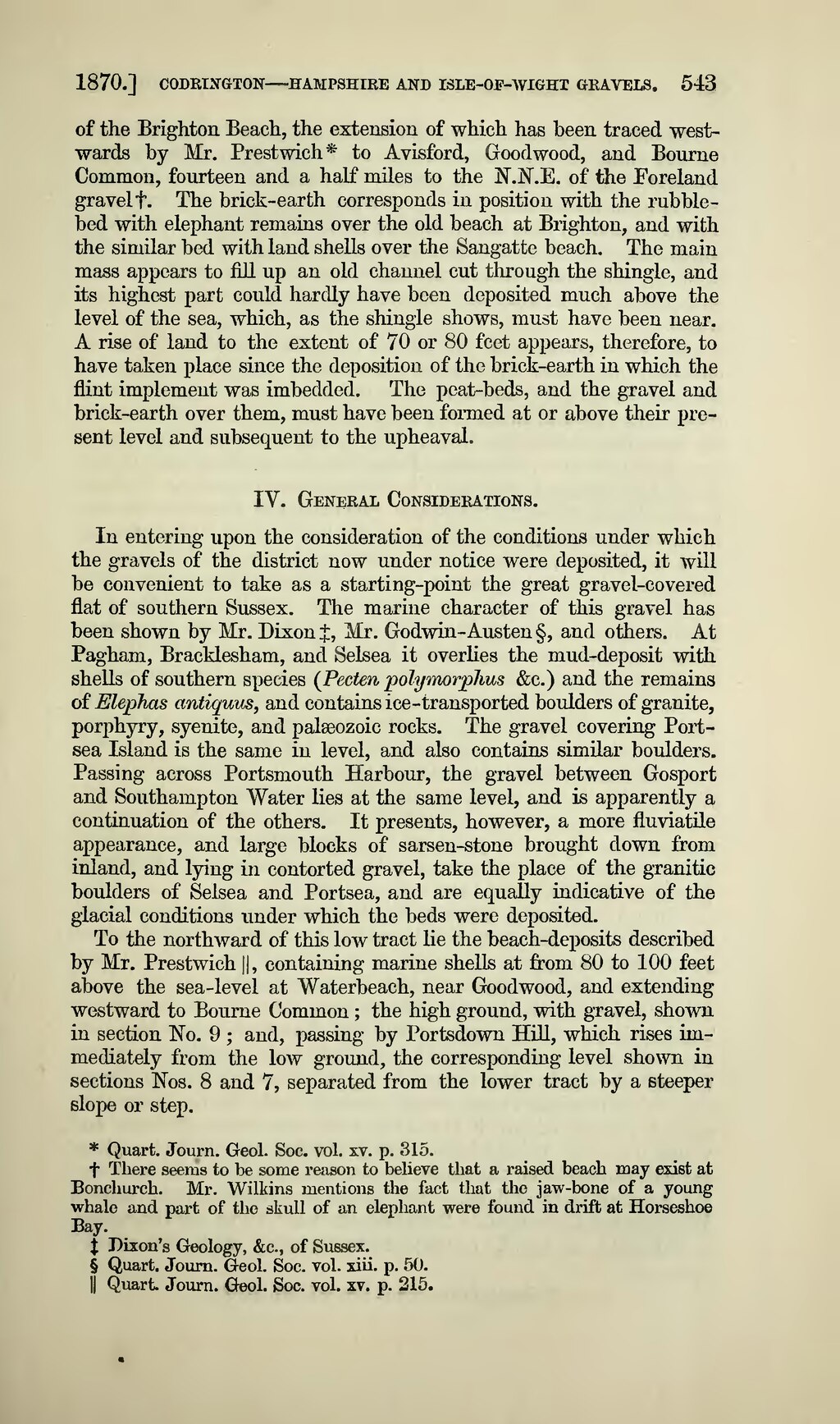of the Brighton. Beach, the extension of which has been traced westwards by Mr. Prestwich[1] to Avisford, Goodwood, and Bourne Common, fourteen and a half miles to the N.N.E. of the Foreland gravel[2]. The brick-earth corresponds in position with the rubble-bed with elephant remains over the old beach at Brighton, and with the similar bed with land shells over the Sangatte beach. The main mass appears to fill up an old channel cut through the shingle, and its highest part could hardly have been deposited much above the level of the sea, which, as the shingle shows, must have been near. A rise of land to the extent of 70 or 80 feet appears, therefore, to have taken place since the deposition of the brick-earth in which the flint implement was imbedded. The peat-beds, and the gravel and brick-earth over them, must have been formed at or above their present level and subsequent to the upheaval.
IV. General Considerations.
In entering upon the consideration of the conditions under which the gravels of the district now under notice were deposited, it will be convenient to take as a starting-point the great gravel-covered flat of southern Sussex. The marine character of this gravel has been shown by Mr. Dixon[3], Mr. Godwin-Austen[4], and others. At Pagham, Bracklesham, and Selsea it overlies the mud-deposit with shells of southern species (Pecten polymorphus &c.) and the remains of Elephas antiquus, and contains ice-transported boulders of granite, porphyry, syenite, and palæozoic rocks. The gravel covering Portsea Island is the same in level, and also contains similar boulders. Passing across Portsmouth Harbour, the gravel between Gosport and Southampton Water lies at the same level, and is apparently a continuation of the others. It presents, however, a more fluviatile appearance, and large blocks of sarsen-stone brought down from inland, and lying in contorted gravel, take the place of the granitic boulders of Selsea and Portsea, and are equally indicative of the glacial conditions under which the beds were deposited.
To the northward of this low tract lie the beach-deposits described by Mr. Prestwich[5], containing marine shells at from 80 to 100 feet above the sea-level at Waterbeach, near Goodwood, and extending westward to Bourne Common; the high ground, with gravel, shown in section No. 9; and, passing by Portsdown Hill, which rises immediately from the low ground, the corresponding level shown in sections Nos. 8 and 7, separated from the lower tract by a steeper slope or step.
- ↑ Quart. Journ. Geol. Soc. vol. xv. p. 315.
- ↑ There seems to be some reason to believe that a raised beach may exist at Bonchurch. Mr. Wilkins mentions the fact that the jaw-bone of a young whale and part of the skull of an elephant were found in drift at Horseshoe Bay.
- ↑ Dixon's Geology, &c, of Sussex.
- ↑ Quart. Journ. Geol. Soc. vol. xiii. p. 50.
- ↑ Quart. Journ. Geol. Soc. vol. xv. p. 215.
